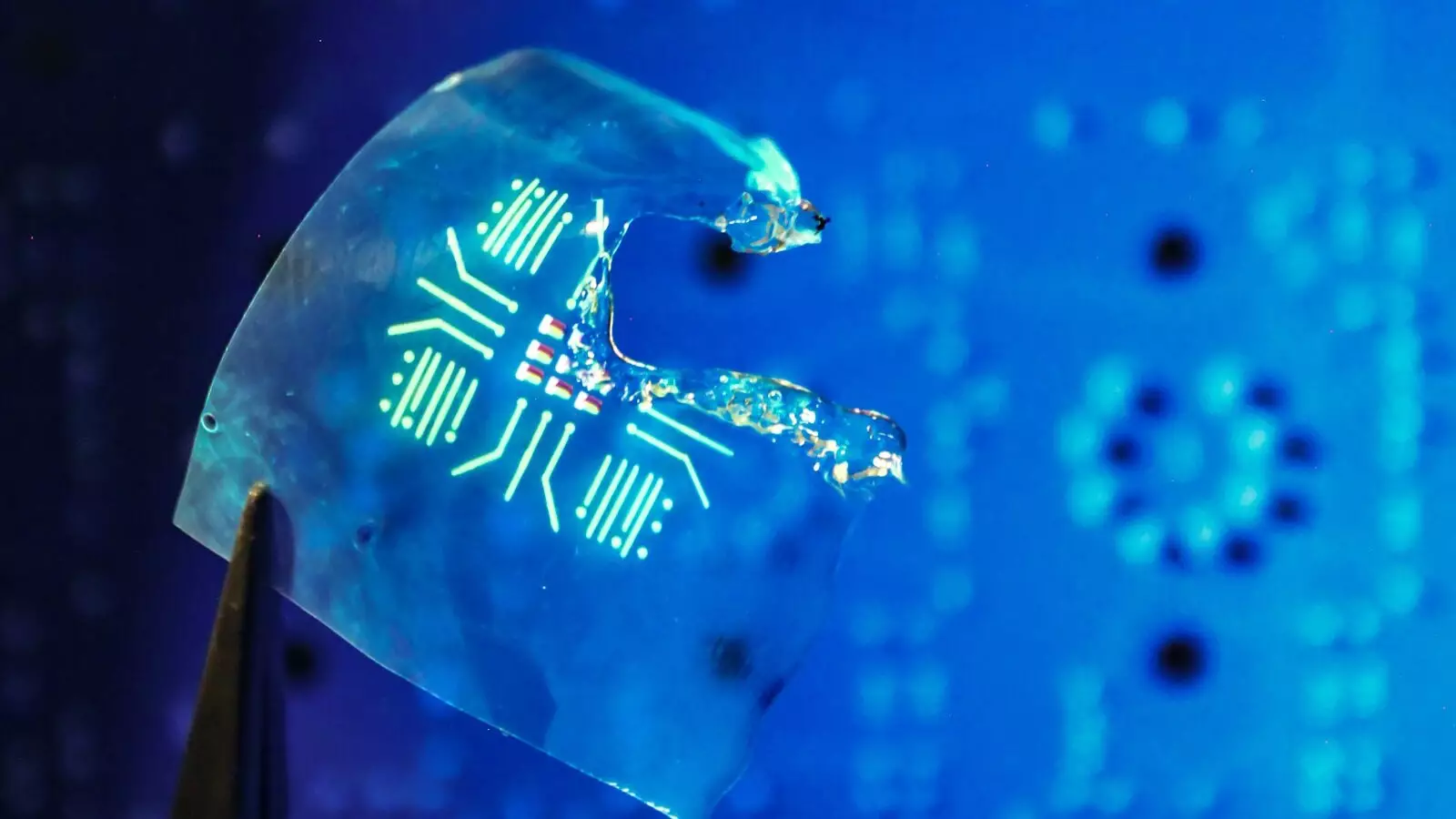In an age where technology permeates almost every aspect of our lives—from navigation apps leading us home to mesmerizing displays in state-of-the-art gadgets—the implications of electronic waste loom ominously. As we enhance our connectivity and convenience, the reality of our disposable culture becomes stark. The majority of the electronic devices we rely on, which often utilize luminescent polymers for their aesthetic and functional properties, eventually find their way into landfills once deemed obsolete. This burgeoning waste problem isn’t merely a nuisance; it poses significant environmental threats that require our urgent attention.
Breaking Down the Science of Luminescent Polymers
At the forefront of innovation, luminescent polymers are remarkable materials that emit light and possess an extraordinary degree of flexibility and stretchability. Their versatility opens the door for myriad applications, but the road to sustainability remains riddled with obstacles. Traditional recycling methods are fraught with challenges; they are often cost-prohibitive and energy-intensive, making the recycling of precious materials like luminescent polymers a complex issue that we’ve barely scratched the surface of.
Yet, amidst growing concerns over electronic waste, a novel initiative spearheaded by scientists from the U.S. Department of Energy’s Argonne National Laboratory, alongside scholars from the University of Chicago, Purdue University, and Yale University, has paved the way toward a more sustainable future. Their groundbreaking research highlights a renewed focus on designing luminescent polymers that not only exhibit high light-emitting efficiencies but can also be biodegraded or recycled effectively.
Innovations in Sustainable Design
The research team’s breakthrough centers around an ingenious modification to the polymer structure by incorporating a chemical known as tert-butyl ester. This addition significantly improves the material’s potential for recycling while retaining its indispensable light-emitting capabilities. When exposed to heat or mild acid, this chemical enables the polymer to degrade into simpler components that can be further purified and converted back into new materials, positioning them for a second life.
Remarkably, in their rigorous tests, the new polymer outperformed previous iterations, achieving an external quantum efficiency score of 15.1% in electroluminescence—an astonishing tenfold increase. Such advancements signify a monumental step towards solving the electronic waste crisis, merging environmental priorities with technological innovation. As Jie Xu, the project lead, articulates, this endeavor not only reflects an important benchmark but also sets the stage for a paradigm shift in our approach to electronics design.
The Road Ahead: Expanding Applications and Market Implications
Looking ahead, the research team aspires to integrate this sustainable polymer technology into existing electronics, spanning devices from mobile phones to medical imaging equipment. They are keen to emphasize the importance of designing these materials not just for current functionality but also for future sustainability. As Yuepeng Zhang, a materials scientist involved in the study, points out, achieving compatibility with production processes is essential for real-world applicability.
Projects like this signal an important shift in how we think about electronics and their lifecycle. With the global tech industry worth an astounding $46 billion and projected to balloon to $260 billion by 2032, the implications of introducing sustainable practices cannot be overstated. By addressing recyclability at the molecular level, we have the opportunity to significantly reduce the detrimental impact of electronic waste on our environment.
A Call to Action in the Electronics Industry
The urgency to address the sustainability of electronics cannot be ignored. With each passing year, millions of tons of electronic waste accumulate, brimming with precious materials and harmful substances that threaten our planet. The innovative breakthroughs by the Argonne National Laboratory team serve not just as a beacon of hope but as a clarion call for other researchers, manufacturers, and policymakers to re-evaluate their approach to electronic design.
Jie Xu emphasizes that concerted efforts towards this goal are critical for the future of electronics, placing the onus on the industry to adopt a mindset that prioritizes recyclability and environmental responsibility. As these sustainable luminescent polymers pave the way for greener solutions, the necessity to think long-term is becoming increasingly clear. In an era defined by innovation, our commitment to a sustainable future in technology is not merely an option—it has become an imperative.

